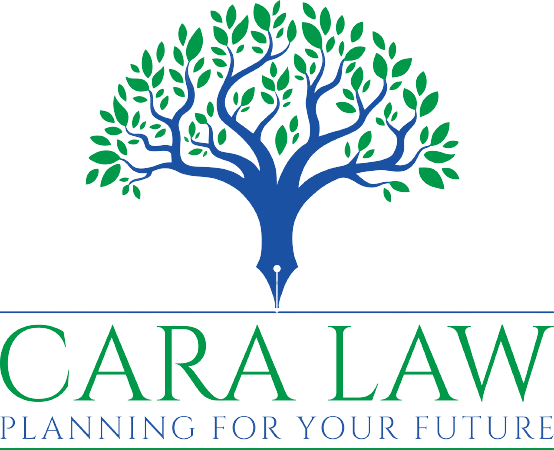 Takeaways
Takeaways
- A transfer-on-death (TOD) account may be a simple and straightforward way for you to pass your wealth or property on to your loved ones after your death.
- TOD accounts can help your loved ones receive your financial assets upon your death without having to go through the court.
What Is a TOD Account?
When considering how to pass your assets on to the next generation or other beneficiaries, you have many options. One tool in your estate planning toolkit is the transfer-on-death account.
Transfer-on-death (TOD) accounts allow account owners to designate beneficiaries who will automatically inherit the account’s assets upon the owner’s death. These accounts can apply to various types of financial assets, such as bank accounts, brokerage accounts, and even some real estate, depending on state laws.
By sidestepping the court process known as probate, TOD accounts offer an efficient way to pass assets to loved ones or charities. However, they are not suitable for all situations. Knowing when and how to use a transfer-on-death account can help your assets get to your beneficiaries in a timely manner.
When a TOD Account Can Be Beneficial
TOD accounts can be useful for numerous reasons. Here are some scenarios to consider.
Avoiding Probate
One of the primary advantages of TOD accounts is that they bypass the probate process, which can be time-consuming, expensive, and public. The assets in a TOD account transfer directly to the designated beneficiaries, often within weeks, reducing administrative delays. Because probate proceedings are public record, this keeps the transfer private.
Cost-Effective Estate Planning
Setting up a TOD account typically involves minimal cost, making it a more affordable option than creating a trust. This can be particularly advantageous for individuals with smaller estates.
Simplicity in Asset Transfer
TOD accounts are straightforward to set up and administer. The account owner simply names beneficiaries, who then receive the assets after the account owner dies – without having to go through additional paperwork or court intervention.
Flexibility During the Owner’s Lifetime
The account owner retains full control of the assets during their lifetime and can change or remove beneficiaries at any time without the beneficiaries’ consent.
When a TOD Account May Not Be Beneficial
Though TOD accounts can be useful in many situations, there are times when they may not provide the best solution. Consider the following scenarios and see if any apply to your situation.
Complex Family Dynamics
In families with complicated relationships, TOD accounts can lead to disputes. For example, if beneficiaries are not equally named or if some family members are left out entirely, conflicts may arise.
Inadequate Estate Planning for Large Estates
For individuals with substantial assets or complex estates, TOD accounts may not address all planning needs. They do not provide tax advantages or the level of control over asset distribution that a trust might.
Lack of Contingency Planning
Though TOD accounts allow for primary beneficiaries, they may not always offer robust options for contingent beneficiaries. If the named beneficiary predeceases the account owner and no alternates are listed, the assets could end up in probate.
Potential for Unintended Consequences
Life events, such as divorce or estrangement, can render a TOD designation outdated. If account owners forget to update beneficiaries, assets might go to unintended recipients.
Not Suitable for Minors
If the named beneficiary of a TOD account is a minor, they cannot legally manage the inherited assets until reaching adulthood. This situation often necessitates the appointment of a conservator or the creation of a trust, complicating the transfer process.
Creditors’ Claims
Beneficiaries of TOD accounts are not shielded from creditors. If the beneficiary has significant debts, creditors may claim the inherited assets to settle outstanding liabilities.
Considerations When Using TOD Accounts
Though TOD accounts are relatively simple and straightforward, there are some things you should keep in mind when employing them.
Review and Update Regularly
Periodically review your beneficiary designations, especially after major life events such as marriage, divorce, the birth of children, or the death of a beneficiary.
Coordination With Other Estate Planning Tools
Ensure TOD accounts align with your overall estate plan to avoid conflicts between documents like wills and trusts.
Beneficiaries With Disabilities
For individuals with disabilities who are receiving government benefits, being the beneficiary of a TOD account could cause them to lose their benefits. Other estate planning tools, such as a special needs trust, may be necessary in such a situation.
Understand State Laws
Regulations governing TOD accounts vary by state, particularly for real estate. Consult an estate planning attorney near you to ensure compliance.
Setting Up a TOD Account
Designating an account or other asset as a transfer-on-death account is relatively simple. Here are the steps that generally need to be taken:
- Determine eligibility. TOD designations are often available for financial accounts such as brokerage accounts, individual retirement accounts (IRAs), savings accounts, and even certain types of real estate (depending on the state).
- Choose a beneficiary. Decide whom you want to name as the beneficiary. Some accounts allow multiple beneficiaries with specific percentages assigned to each.
- Contact the financial institution. Reach out to the bank, credit union, or brokerage firm where the account is held. Request the necessary forms to add a TOD designation.
- Complete the TOD form. Fill out the form provided by the institution. Some institutions may require notarization or witnesses.
- Verify state laws. Check whether your state supports TOD designations for all account types. Some states have restrictions or require specific registration (e.g., for real estate through a transfer-on-death deed).
- Update beneficiary information. Periodically review and update beneficiary designations, especially after major life events, such as marriage, divorce, or the death of a beneficiary.
Getting More Help With TOD Accounts
If you need specific advice or assistance, consulting with your estate planning attorney can help ensure your TOD designations align with your overall estate plan.





